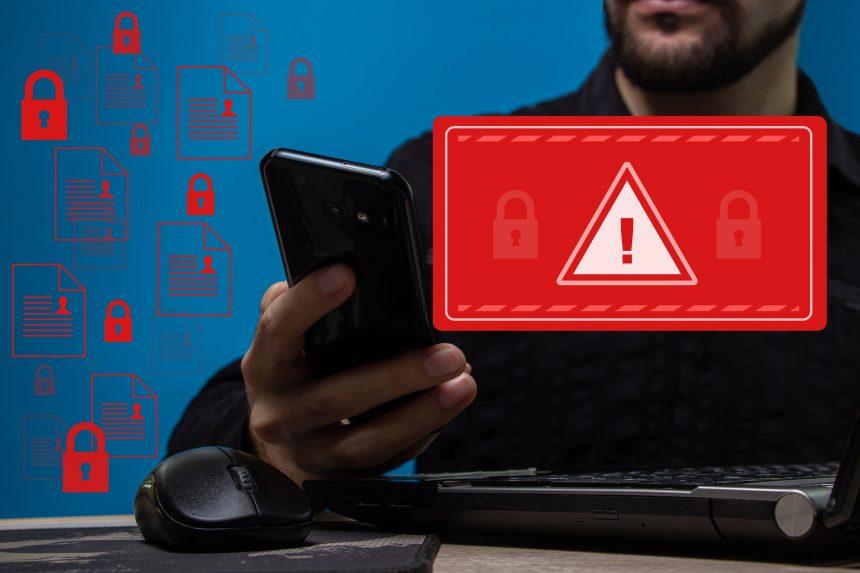In the vast expanse of the digital realm, threats lurk around every corner, seeking to ensnare unsuspecting victims. One such treacherous entity is the “Too Late Virus” scam, a nefarious scheme designed to exploit users’ trust and coerce them into relinquishing their hard-earned money. With its insidious tactics and deceptive appearance, this malware poses a significant risk to users’ privacy, security, and financial well-being.
Understanding the Too Late Virus Scam
Imagine innocently navigating through your computer, only to be confronted with a menacing message emblazoned across your screen: “TOO LATE.” This ominous proclamation serves as the calling card of the Too Late Virus scam, signaling that your system has fallen prey to a cunning cybercriminal’s machinations. But what exactly is this malicious entity, and how does it operate?
The Too Late Virus operates under the guise of a lock screen, effectively seizing control of users’ computers and displaying a fraudulent warning message. This message, often adorned with alarming rhetoric, claims that the victim’s system is infected with a debilitating virus that jeopardizes sensitive information such as credit card details and personal data. To compound the sense of urgency, the scammer impersonates a technical expert, urging the victim to pay exorbitant sums of money to unlock their device and mitigate the supposed threat.
The Perils of the Too Late Virus
Beyond its coercive tactics and deceptive façade, the Too Late Virus poses a myriad of dangers to unsuspecting users. Upon infiltrating a system, this insidious malware can wreak havoc in various ways, including:
- Data Breaches: The Too Late Virus may clandestinely access and exfiltrate users’ personal information, including financial data, passwords, and sensitive documents.
- Surveillance: By logging keystrokes and accessing peripherals such as microphones and cameras, the malware can surreptitiously monitor users’ activities and invade their privacy.
- File Corruption: In addition to locking the screen, the virus may corrupt or delete files, causing irreparable damage to users’ data and compromising system integrity.
Detecting and Removing the Too Late Virus
Recognizing the signs of the Too Late Virus is crucial for safeguarding against its pernicious effects. Common indicators of infection include sudden screen lockouts accompanied by alarming messages demanding payment. To rid your system of this malicious threat, follow these comprehensive removal steps:
- Enter Safe Mode: Restart your computer and enter Safe Mode to mitigate the virus’s ability to execute malicious processes.
- Disable Startup Programs: Access your system’s startup settings and disable any suspicious programs or processes that may facilitate the virus’s persistence.
- Scan for Malware: Utilize reputable antivirus software to perform a thorough scan of your system and identify any traces of the Too Late Virus or associated malware.
- Manual Removal: Manually delete any suspicious files or registry entries linked to the virus, taking care to follow precise instructions to avoid inadvertently causing further damage.
- Restore from Backup: If possible, restore your system from a previous backup to revert to a clean state before the virus infiltrated your device.
Preventing Future Infections
While combating the Too Late Virus is essential, preemptive measures are equally crucial for safeguarding against future threats. Implement the following best practices to fortify your defenses:
- Exercise Caution: Exercise caution when downloading files or clicking on links from unknown or untrustworthy sources, as these may serve as vectors for malware transmission.
- Keep Software Updated: Regularly update your operating system and security software to patch vulnerabilities and mitigate the risk of exploitation by malware.
- Enable Firewall Protection: Activate and configure your system’s firewall to monitor incoming and outgoing network traffic, thereby thwarting unauthorized access attempts.
- Educate Yourself: Stay informed about the latest cybersecurity threats and scams, empowering yourself to recognize and respond effectively to potential dangers.
By remaining vigilant and adopting proactive security measures, users can fortify their digital defenses and mitigate the risk of falling victim to insidious threats like the Too Late Virus scam.
In conclusion, the Too Late Virus scam represents a clear and present danger in the ever-evolving landscape of cyber threats. Armed with knowledge, vigilance, and the aforementioned removal guide, users can fortify their defenses and navigate the digital realm with confidence and resilience.





